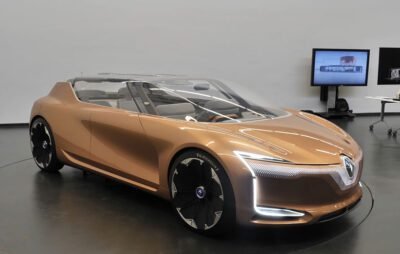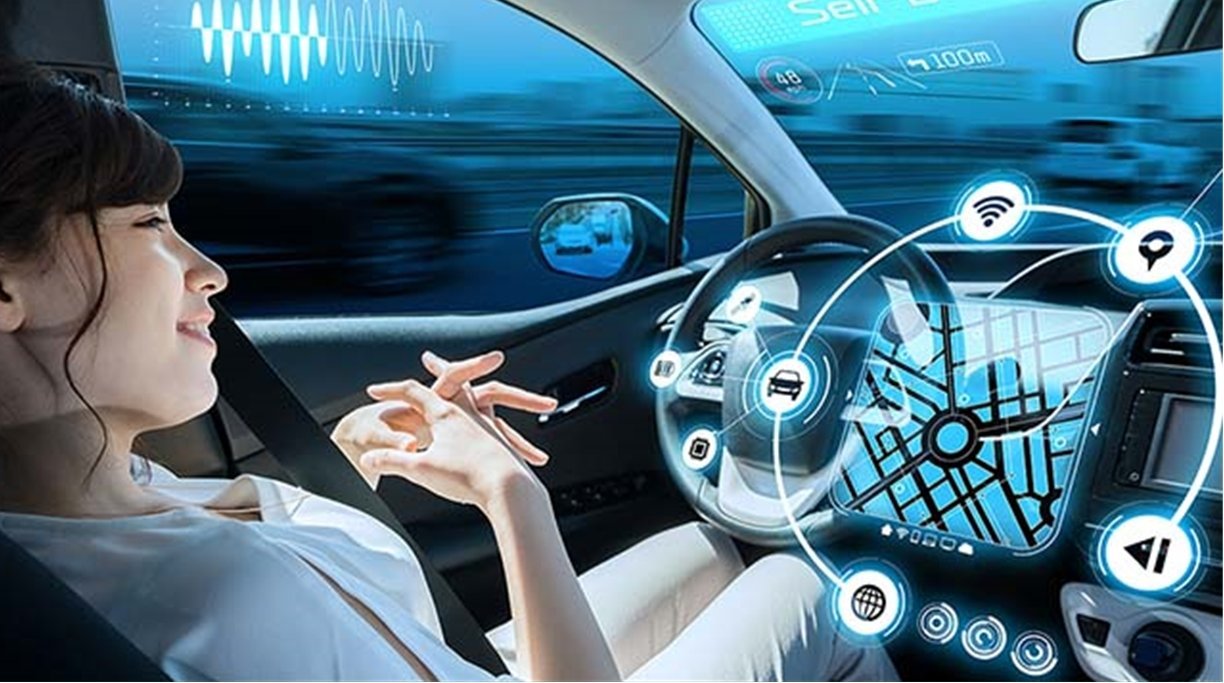Self-driving cars are special types of cars equipped with advanced technologies that are able to move automatically without the need for a driver. These cars benefit from artificial intelligence systems, sensors, cameras, automatic controls, and other related technologies to recognize the surrounding environment. Below are some of the features and benefits of self-driving cars:

Kendi Kendine Giden Arabalar
high security:
As another concept, self-driving car technology plays a big role in creating an advanced and safe transportation infrastructure. These technologies have increasingly helped create a safer and smarter environment for driving on the road.
Reducing accidents and risks:
Self-driving cars prevent accidents and dangers with collision avoidance systems, obstacle detection and intelligent routing. This helps to increase road safety and reduce injuries and damages caused by accidents.
Increasing productivity and economy:
Self-driving cars provide higher productivity and economy due to the reduction of costs caused by accidents and increase in fuel efficiency. This will help to develop public transportation and reduce dependence on private cars.
Convenience and ease:
By eliminating the need for manual control, self-driving cars allow drivers to spend more time on other activities such as work, recreation and relaxation. This provides improved comfort and quality of life.
Reducing pollution and traffic:
With greater efficiency of the road bed and intelligent routing, self-driving cars can help reduce air pollution and urban traffic. These cars are able to move in coordination with each other and determine optimal routes to avoid unnecessary and time-consuming traffic.


The main components of self-driving engines
Sensors:
Here, various sensors such as radars, lasers, cameras and air pressure sensors are used to collect and analyze information from the surrounding environment. This information is very critical; Because they help to make appropriate decisions and provide accurate answers in different situations.
Artificial intelligence (AI) systems:
Artificial intelligence technologies such as artificial neural networks and deep learning algorithms are used to analyze and process information from sensors, and make intelligent decisions about vehicle movement and performance.
Communication systems:
This includes wireless communications, the Internet of Things (IoT) and urban area systems (V2X), which allow the vehicle to communicate with other vehicles, road infrastructure and central systems. These connections are used to exchange data, traffic information and alerts to improve decisions and create a smart transportation environment.
Vehicle control systems:
It includes steering systems, speed control, brake control and other functions related to the movement and endurance of the vehicle. Using data from sensors and artificial intelligence, these systems provide improved performance and reduced risks associated with accidents.
With the help of these technologies and systems, self-driving cars benefit from scientific and technological advances and facilitate the creation of smart and safe transportation.


Sensors
Sensors are one of the most important technological elements in self-driving cars. These sensors detect the environment around the car and send related information to the artificial intelligence and car control systems. This information allows the car to intelligently and safely interact with the surrounding environment.
The sensors used in self-driving cars include different types of technologies:
Radars:
These sensors are used to detect objects and obstacles around the car. They can detect objects even in conditions of limited visibility such as rain, fog, and frost.
Lasers:
Lasers are also used to detect objects and obstacles around the vehicle. This technology uses the scattering of laser light from objects to determine distances.
cameras:
These sensors are used to detect and identify road signs, road lines, traffic signs, as well as to identify pedestrians and other vehicles.
Air pressure sensors:
These sensors are used to detect ambient air pressure and tire pressure. This information allows the car to adjust its settings more precisely and have more optimal performance and fuel consumption.
Sensors for the environment:
These sensors are used to detect environmental conditions such as temperature, humidity, and light intensity. This information allows the car to react correctly and manage the internal equipment of the car properly.
These sensors, in collaboration with artificial intelligence systems and advanced data processing, carefully analyze the environment around the car and allow the car to improve with different road conditions and traffic environment and have a safer and smarter performance.
Radars:
Radars use different electromagnetic waves, including infrared, radio, and even millimeter waves.
– These sensors are able to detect objects at different distances, from close to the car to farther distances, even in adverse conditions such as rain, snow, and fog.
Lasers:
Lasers also use electromagnetic waves, but instead of radio waves, they use laser light waves.
– These sensors detect the distances of objects more accurately than radars and are able to operate extremely accurately in short distances.
– In addition, lasers are able to detect more precise details of objects and are generally used for more accurate information of the vehicle’s surroundings.
These two types of sensors are used in combination in self-driving car systems to provide a comprehensive picture of the car’s surroundings and allow the car to interact in the best way with different road conditions and traffic environment, resulting in safer and smarter driving.
All types of radars and lasers
Distance detection radars (RADAR):
Short-Range Radars:
They are used to detect objects and obstacles close to the car, such as nearby cars and sidewalks.
Medium-Range Radar:
They are used to detect objects at medium distances such as front and rear cars.
Long-Range Radar:
They are used to detect objects at longer distances from the road, such as traffic ahead and objects at far distances.
Lasers (LIDAR):
Lasers based on frequency modulation (Frequency-Modulated Continuous-Wave LIDAR):
They are used to accurately detect the position and distances of objects with high accuracy.
Imaging lasers (LIDAR Imaging):
They are used to provide accurate 3D images of the car’s surroundings.
Pulsed lasers (Pulsed LIDAR):
They are used to detect the speed and distance of objects with high accuracy.
cameras
In some cases, image sensors are also used, which usually consist of conventional light-sensitive cameras. These sensors provide images and videos of the vehicle’s surroundings. With the cooperation of artificial intelligence systems and advanced data processing, these sensors allow the car to intelligently interact with its surroundings and drive safer and smarter.
1. Side cameras:
These cameras are used to monitor lanes and side paths and detect hazards on the side of the vehicle.
2. Front cameras:
– These cameras detect traffic signs, road lines, and vehicles in front.
3. Rear Cameras:
– These cameras are used to assist with parking, detect vehicles behind, and warn of approaching rear obstacles.
4. 360-Degree Cameras:
– These cameras provide images of the car’s surroundings and help self-driving cars to be more accurately aware of their surroundings.
5. Lighting cameras (Night Vision Cameras):
– These cameras are used to detect and display objects and dangers in low light conditions.
6. Dynamic cameras:
– These cameras are used to record videos from around the car while driving.
In the design of self-driving cars, various combinations of cameras, radars, lasers and other sensors are used to provide sufficient information to the artificial intelligence systems and allow the car to intelligently interact with its surroundings.
artificial intelligence (AI) system
Undoubtedly, the artificial intelligence (AI) system is one of the vital components in self-driving cars, which allows them to interact with their surroundings and make appropriate decisions. These systems use algorithms and machine learning models to analyze sensor data and environmental information and act on them. Below are some features and applications of artificial intelligence system in self-driving cars:
1. Prediction and diagnosis: The artificial intelligence system allows cars to predict and recognize movement patterns, driver behaviors and road conditions. This application can be useful in informing the driver of dangers and identifying unusual behaviors on the road.
2. Self-driving: the artificial intelligence system can give the car the possibility of self-driving or driving with a driver. Using machine learning algorithms and neural networks, these systems allow the car to navigate itself on the road and make appropriate decisions.
3. Prediction of traffic and road conditions: By aggregating environmental data and traffic information, the artificial intelligence system can help cars choose the right route to travel and use the optimal traffic conditions.
4. In-car intelligent systems: The artificial intelligence system can act as an intelligent system in cars that has features such as touch screen, voice recognition, speech systems and voice command control systems.
5. Energy management: By gathering data on fuel consumption and road conditions, the artificial intelligence system can help the car to optimize fuel consumption and use more energy.
The artificial intelligence system is one of the most important and advanced components in self-driving cars, which allows them to interact more intelligently with their surroundings and perform better.
We have prepared articles related to the world’s best cars and mountain car engines for you.


